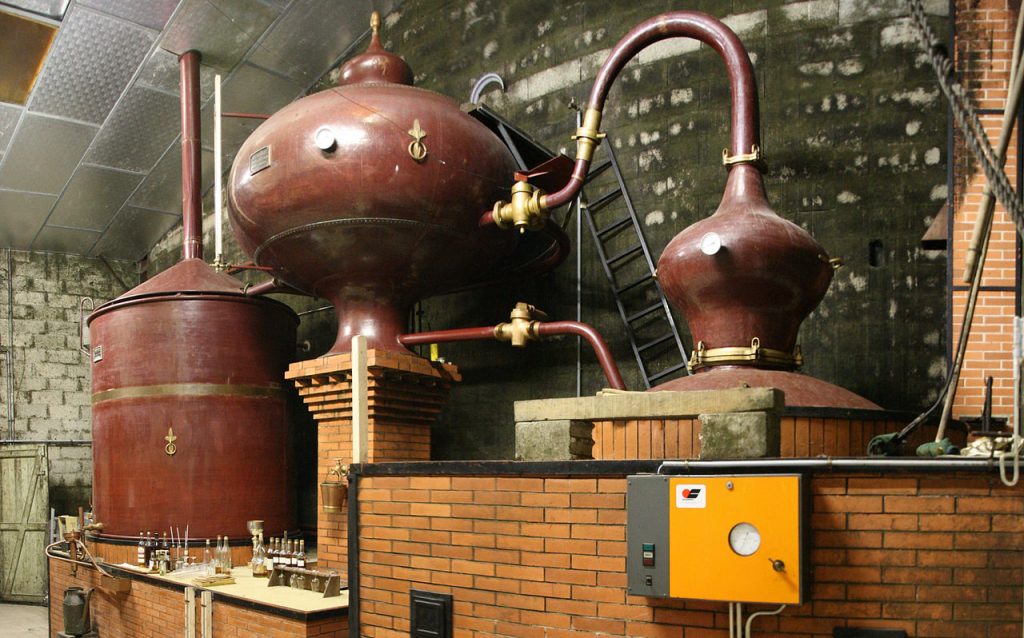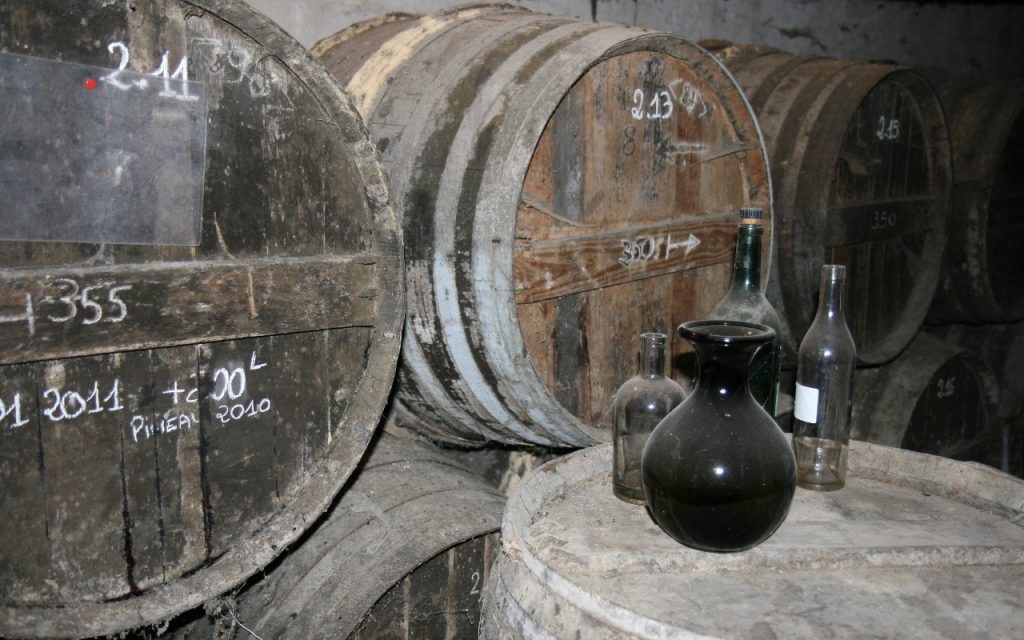By Alastair Culham
A key winter preservative for mincemeat, Christmas puddings and cakes, as well as fruit is alcohol. The classic alcohol for these is French Brandy (Cognac or Armagnac) but brandy is a more general term for heat distilled alcohol (Faith, 1987). The Dutch ‘brandewijn’, meaning burnt wine, is the origin of our modern term brandy, and dates from the mid 17th Century. It applies to spirits distilled from wine or other fermentation products and is thought to refer to the heat applied in the distillation process. The condensate gathered from the heating contains the alcohol, a proportion of the water and a wide range of other volatile chemicals that give each brandy its distinctive flavour.

Many countries have their own version of brandy, perhaps the most famous are the French Cognacs and Armagnacs, distilled from wine, but others, such as slivovitz, from Poland (made from fermented plum alcohol) and Shōchū, from Japan (distilled from a range of products as diverse as rice wine, sweet potato and buckwheat alcohols) do not involve grapes in their production. Some are even produced from fermented mares milk.
Discovery of brandy production
Records of the earliest evidence of heat distillation are somewhat sparse but Fairley (1907) suggests many independent origins of distillation from China and Japan, through India and Europe to South America to be lost in ancient history. All cultures used a similar process of a vessel in which the weak alcohol solution is boiled and a cold vessel into which the vapour flows and forms liquid.
What is brandy made from?
Anything containing natural sugars can be fermented to form an alcoholic solution from rice and grapes to mares milk (decidedly non-botanical). For Cognac and other brandies distilled from wine, the grapes are harvested early to give a higher acidity and lower sulphur content. The fermentation of these ingredients is usually at 20-25C for around a week. There is no extended maturation process needed at this stage as this happens after distillation (Harper, 1999). For finer brandies, the alcoholic liquid is put in a pot still, usually made of copper, where is is boiled slowly and the alcoholic vapour collected. There is commonly a second distillation to further concentrate the alcohol. The challenge of making fine brandies is to extract the alcohol and the good aromas and tastes but to leave the unpleasant ones behind. Most fruit brandies retain the underlying flavour of the source fruit, even in modified and sometimes caramelised form. It takes about 35 litres of the initial fermentation product to yield about 4 litres of brandy. The first distillation converts a liquid with 4-10% alcohol to a concentrate of around 30% alcohol and this is further increased to as high as 72% on the second distillation. This is then matured in oak casks previously used for the production of fino (sherry). The oak gives the brown colouration and the ageing process softens the flavours.

Brandy is usually stored for 2-6 years before bottling. Once bottled the maturation process is halted. Brandy is usually a mix of the matured spirit and water to a final concentration of around 40%. Mass produced brandy uses a fractionation column as part of the distillation process to allow the ethanol component to be separated off in one step. This can yield up to 96.5% alcohol which can be used to produce gin or sold as vodka (Bamforth & Ward 2014).
Whatever distillate you use as brandy, think about the plants that give rise to it and give it’s great variety. For a readable review of the history and taxonomy of distilled spirits try Reisner (2002).
References
Bamforth, C.W. and Ward, R.E., (2014). The Oxford Handbook of Food Fermentations. Oxford and New York: Oxford University Press. ISBN: 978-0-19-974270-7. 2014.
Fairley T (1907) The early history of distillation. J Inst Brew 13:559–582
Faith, Nicholas. (1987). Cognac. Boston: David R. Godine
Harper, William, (1999). Origins and Rise of the British Distillery. Lewiston, U.K.: The Edwin Mellen Press.
Reisner, A. (2002). History and Taxonomy of Distilled Spirits. https://www.alexreisner.com/misc/distilled-spirits
